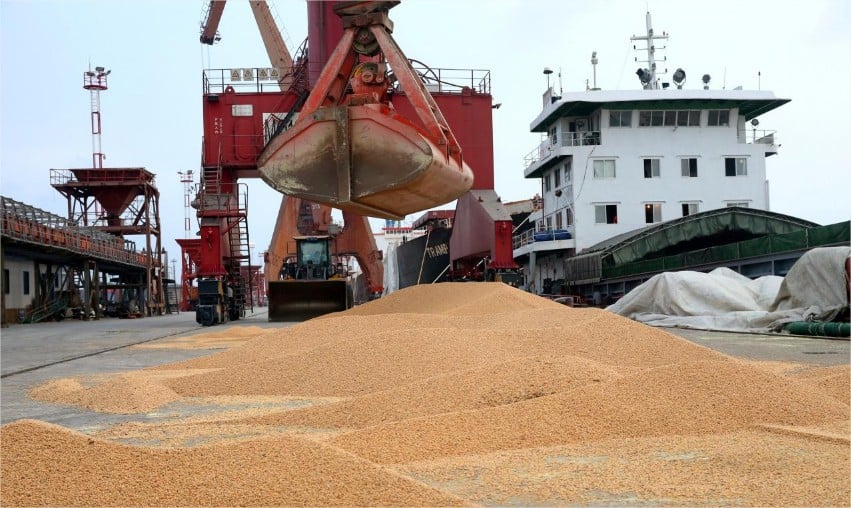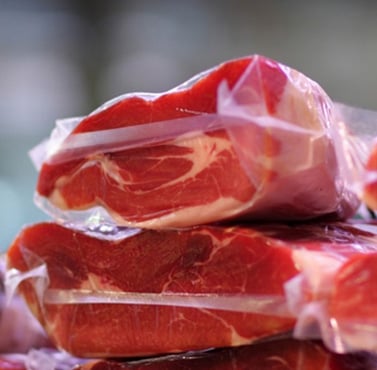According to the monthly statistical report from the Brazilian Coffee Exporters Council (Cecafé), the country exported 3.274 million 60 kg bags of the product in the second month of 2025, which represents a drop of 10.4% compared to the same period last year. In terms of revenue, however, the performance is 55.5% higher, yielding US$1.190 billion to the country – a record amount for the month of February –, reflecting the high prices on the global market.
With last month's performance, Brazilian coffee shipments rose to 33.452 million bags in the first eight months of the 2024/25 harvest, generating foreign exchange earnings of US$1.5T 9.723 billion. Both performances are records for this period and imply increases of 8.81T4T in volume and 59.81T4T in foreign exchange revenue compared to the period from July 2023 to February 2024.
CIVIL YEAR
In the first two months of this year, Brazil shipped 7.278 million bags of coffee, registering a decline of 5.4% compared to the 7.694 million recorded in the first two months of 2024. Following the monthly performance, revenue grew 58.4% in the aggregate of January and February, jumping to US$$ 2.516 billion, compared to US$$ 1.588 billion recorded in the same period last year.
“Although international stock markets have retreated from recent highs, current prices and average prices over the last few months are significantly higher than those seen in the same period last year, which justifies the record revenues,” explains Márcio Ferreira, president of Cecafé.
However, he recalls that Brazil is in the off-season, which means that, in recent months and currently, the price differentials for the country's conilon and robusta coffees, compared to the London stock exchange, are not competitive compared to those of other important producing origins, such as Vietnam, whose coffees have much more attractive prices than those of Brazilian canephoras.
Ferreira adds that, similarly, national Arabicas are also more expensive compared to the differences in prices of products from Central American countries on the New York Stock Exchange. “These factors should continue to impact the performance of Brazilian exports, which may continue in lower volumes in the following months,” he reports.
Still regarding the slowdown in shipments, the president of Cecafé mentions a possible and specific reduction in global consumption of the beverage. “The record prices recorded on the national and international scene are far from what has already been passed on by industries in Brazil and abroad and even further from what supermarkets have passed on to consumers. Even if we see more contractions in the stock markets, new increases in consumer prices should not be ruled out, given this large time lag. These potential increases will have a direct impact on inflation in the economies of consumer countries, whether producers or not, and will generate a reduction in consumption”, he analyzes.
According to Ferreira, the squeeze financial, with a reduction in credit lines, which did not keep up with the rise in commodity coffee in dollars or reais, has also become a “factor of enormous relevance” for the reduction in trade flow.
“These sudden changes in prices, both domestically and internationally, have generated record demands for dollar-denominated resources to cover variation margins never seen before in futures markets, which could have a negative impact on prices, although they should still remain at attractive levels for producers, given the tight balance between supply and demand. In the case of Brazil, the largest global producer, the answers will come after the harvest, when we have a clear idea of the yield of the 2025/26 crop,” he projects.
In addition, he mentions that, after the future winter period in Brazil, if there are no significant weather conditions and the eventual return of good rainfall volumes, “generating good flowering” for the 2026/27 harvest, it will be possible to envision a harvest that will allow the recovery of national production, since, in general, the crops are well prepared due to investments and good cultural treatments, which were possible due to the good prices obtained by coffee growers.
“At the moment, the certainty for the 2025/26 harvest is a much smaller volume (before the 2024/25 cycle) for Arabica and higher for Conilon. With this scenario, we should fall short of the export records seen last year, but still with a representative share, maintaining the country as the largest global producer and exporter, without losing our historical record. market share“, concludes Ferreira.
MAIN DESTINATIONS
The United States was the main destination for Brazilian coffee in the first two months of 2025, with the import of 1.206 million bags, which is equivalent to 16.6% of the total, despite representing a decline of 12.3% compared to January and February 2024.
Germany, with 12.1% of representation, acquired 878,350 bags (-29.4%) and occupied second place in the ranking. Next came Italy, with the import of 531,260 bags (+9.1%); Japan, with 478,844 bags (+3.9%); and Turkey, with 354,904 bags (+88.7%).
It is worth noting that, although their coffees were more competitive than those of Brazil in the first two months, Vietnam and Indonesia, the second and fourth largest global producers, continue to increase their imports of green beans (in natura) from Brazil. The Vietnamese purchased 72,836 bags in the first two months of this year and the Indonesians 47,471 bags, representing increases of 297.3% and 29.2%, respectively.
“Many of these exports to Vietnam and Indonesia are from contracts signed in 2024, when our robusta and conilon coffees were more competitive. It is worth remembering that these coffees should have already left our ports if we were not facing intense logistical bottlenecks due to the outdated nature of our port infrastructure, which generates numerous and constant ship delays, changes in port calls and cargo rollovers,” explains Ferreira.
TYPES OF COFFEE
In January and February, Arabica coffee, with 6.069 million bags shipped abroad, remained the most exported by Brazil. This amount is equivalent to 83.4% of the total shipped, even implying a slight drop of 0.7% compared to the first two months of 2024.
Next, with the equivalent of 640,996 bags sent abroad, came the soluble coffee segment, which recorded an increase of 16.5% compared to the first two months of last year. This type of product accounted for 8.8% of total exports in the current period.
Canephora coffees (conilon + robusta), with 559,928 bags – a decrease of 45.5% and 7.7% of the total –, and the roasted and roasted and ground product, with 7,993 bags (+63.9% and 0.1% of representation), completed the list.
DIFFERENTIATED COFFEES
Coffees with superior quality or certified sustainable practices accounted for 24.8% of total Brazilian exports in the first two months of this year, with 1.801 million bags shipped abroad. This volume is 14.7% higher than that recorded in January and February 2024.
At an average price of US$$ 398.47 per bag, foreign exchange revenue from shipments of differentiated coffees was US$$ 717.7 million, which corresponded to 28.5% of that obtained from all coffee shipments in the first two months of 2025. In the annual comparison, the value is 101.1% higher than that recorded in the first two months of last year.
The USA also led the ranking of the main destinations for differentiated coffees, with the purchase of 351,205 bags, equivalent to 19.5% of the total of this type of product exported.
Rounding out the top 5 were Germany, with 228,840 bags and a representation of 12.7%; Belgium, with 179,510 bags (10%); Japan, with 125,646 bags (7%); and the Netherlands, with 118,806 bags (6.6%).
PORTS
The Port of Santos remained the main exporter of Brazilian coffee in the first two months, with 5.637 million bags and representing 77.5% in total. Next came the port complex of Rio de Janeiro, which accounted for 18.2% of shipments by sending 1.323 million bags abroad, and the Port of Paranaguá (PR), which exported 84,203 bags and represented 1.2%.
The full report on Brazilian coffee exports, updated for February 2025, is available on the Cecafé website: https://www.cecafe.com.br/.




